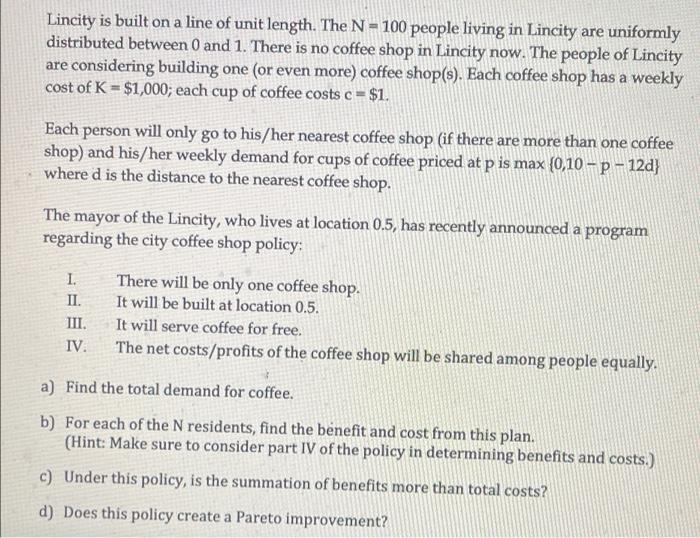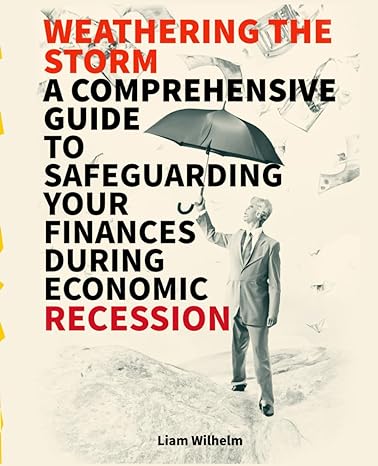Lincity is built on a line of unit length. The N - 100 people living in Lincity are uniformly distributed between 0 and 1. There is no coffee shop in Lincity now. The people of Lincity are considering building one (or even more) coffee shop(s). Each coffee shop has a weekly cost of K = $1,000; each cup of coffee costs c = $1. Each person will only go to his/her nearest coffee shop (if there are more than one coffee shop) and his/her weekly demand for cups of coffee priced at p is max (0,10 - p - 12d} where d is the distance to the nearest coffee shop. The mayor of the Lincity, who lives at location 0.5, has recently announced a program regarding the city coffee shop policy: 1. II. III. IV. There will be only one coffee shop. It will be built at location 0.5. It will serve coffee for free. The net costs/profits of the coffee shop will be shared among people equally. a) Find the total demand for coffee. b) For each of the N residents, find the benefit and cost from this plan. (Hint: Make sure to consider part IV of the policy in determining benefits and costs.) c) Under this policy, is the summation of benefits more than total costs? d) Does this policy create a Pareto improvement? Lincity is built on a line of unit length. The N - 100 people living in Lincity are uniformly distributed between 0 and 1. There is no coffee shop in Lincity now. The people of Lincity are considering building one (or even more) coffee shop(s). Each coffee shop has a weekly cost of K = $1,000; each cup of coffee costs c = $1. Each person will only go to his/her nearest coffee shop (if there are more than one coffee shop) and his/her weekly demand for cups of coffee priced at p is max (0,10 - p - 12d} where d is the distance to the nearest coffee shop. The mayor of the Lincity, who lives at location 0.5, has recently announced a program regarding the city coffee shop policy: 1. II. III. IV. There will be only one coffee shop. It will be built at location 0.5. It will serve coffee for free. The net costs/profits of the coffee shop will be shared among people equally. a) Find the total demand for coffee. b) For each of the N residents, find the benefit and cost from this plan. (Hint: Make sure to consider part IV of the policy in determining benefits and costs.) c) Under this policy, is the summation of benefits more than total costs? d) Does this policy create a Pareto improvement







